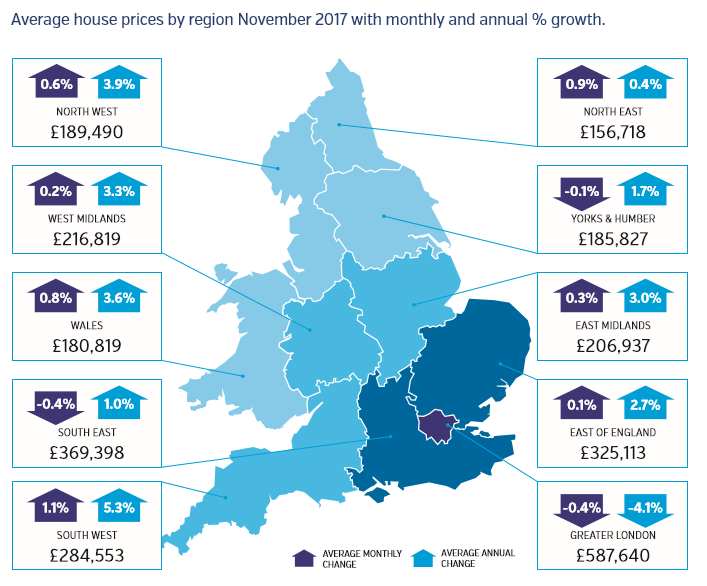The total estimated number of residential property transactions last year was just 874,385 – fewer than the 1.2m annual sales regularly reported in recent years, well below the 2m transactions a year that were a feature of the housing market in the 1980s, and in line with the figures during the years of the crash, 2007 and 2013.
A year-on-year decline in both transactions and average house prices in London dragged down the rest of England and Wales, new figures suggest.
Transactions in the capital dropped 3% in 2017, according to the LSL Property Services/Acadata House Price Index, contributing to an overall fall in England and Wales of 5.3%.
While LSL today claims that last year’s transactions were the lowest since 2013, its figure is slightly up on the previous year according to Lloyds Bank, which says that in 2016, transactions were just 848,857.
Both the LSL and Lloyds figures are at significant odds with what HMRC has reported. In 2016, it reported a total of almost 1.3m transactions in England, Scotland and Wales. HMRC figures for last year’s transactions are due out next week.
Average prices in England and Wales ended last year up just 0.2% at £300,846 and down £5,200 below their peak in March 2017, says LSL.
The sluggish annual average price growth nationwide came in part as a result of a 4.1% annual fall in Greater London to £587,640 (for the year up to November 2017).
LSL/Acadata said the capital was largely out of step with the rest of England and Wales where the market remains broadly positive and where some regions such as the south west and north west have seen strong annual growth in prices, up 5.3% and 3.9% respectively (see map below).
In fact, excluding London and the south-east, both of which saw a slowdown in December 2017, growth for the year in the rest of England and Wales was a more respectable 3%, which meant it just about beat the RPI measure of inflation, which stood at 2.8%.
The top end of the London market continued to be the major casualty. Annual prices in Westminster fell 19.4% for the year to November 2017. Hammersmith & Fulham dropped 13.6% and Wandsworth was down 12.1%. Kensington & Chelsea remained the most expensive borough, despite falling 9.3%, with average prices of just under £1.84m. The worst performer in London was Southwark where prices plummeted 21.1%.
The middle market fared slightly better. The middle 11 of London’s 33 boroughs saw average prices fall 2.6% over the year, compared to 5% for the top third.
There was a very modest 0.2% increase in prices for London’s cheapest boroughs, despite falls of 8.6% in Newham and 6.8% in Greenwich.
Bristol enjoyed the biggest rise in average prices of any area in England and Wales, bar Rutland (which was up 11.3%, but based on relatively few transactions). LSL/Acadata attributed the rise in Bristol to terrace properties, with the average price in the city up from £290,000 in 2016 to £320,000 in November 2017.
Outside of London, Bracknell Forest in Berkshire saw the biggest fall in values annually, down 14.9%, with terrace houses once again showing the biggest movement in prices.
Oliver Blake, managing director of Your Move and Reeds Rains estate agents, said: “The end of 2017 was relatively quiet for house movers, particularly in the capital. Outside of London, however, the majority of regions still reported growth over the month, demonstrating that there is still some strength going into the New Year.”
Meanwhile, new figures from Countrywide released this morning showed a marked drop in the number of homes purchased by landlords.
Countrywide found that 12.5% of homes sold in Great Britain were bought by landlords in 2017. That was down from 14.7% in 2016 and 16.3% in 2015 and represented a nine-year low.
The number of purchases by landlords was down in every region but the drop was particularly significant in London, where there were 21% fewer homes to rent in December 2017 than in December 2016. Overall, the number of homes available to rent in Great Britain in December 2017 was down 4% as compared to the year before.



Comments are closed.